A little known folk song movement and a noise campaign are two examples featured in ALTERing NATIVism Sound Cultures in Post-war Taiwan (造音翻土──戰後台灣聲響文化的探索), a newly published book based on a series of lectures and exhibitions that examine the development of Taiwan’s alternative music and sound art in a political context.
According to curator Amy Cheng (鄭慧華) and music critic Jeph Lo (羅悅全), who co-edited the book together with music critic Ho Tung-hung (何東洪), the 300-page book, which is composed of articles by 26 music critics, artists and scholars, explores the relationship between music and the country’s democratic development from the beginning of the Martial Law era in 1949 to the present, and examines how musicians and artists reflect on and help shape national identity through their work.
SOUND PROJECT

Photo courtesy of TheCube Project Space, Kaohsiung Museum of Fine Arts, MvoNTUE and Taishin Bank Foundation for Arts and Culture
Ever since the inception of TheCube Project Space (立方計畫空間), an art space Lo and Cheng co-founded in 2010, the pair have used it as a platform to carry out curatorial and research projects on Taiwan’s sound culture, a term they use to refer to all kinds of music and other audio creations, ranging from folk, rock and electronic music, to experimental sound and sound art.
The project developed through a series of lectures and exhibitions by musicians and contemporary artists and morphed into large-scale exhibitions at the Museum of National Taipei University of Education (MoNTUE, 北師美術館,) and the Kaohsiung Museum of Fine Arts (高雄市立美術館) last year. Those exhibitions received the grand prize at this year’s Taishin Arts Award (台新藝術獎).
ALTERING NATIVISM
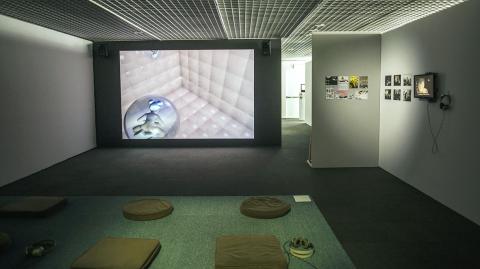
Photo courtesy of TheCube Project Space, Kaohsiung Museum of Fine Arts, MvoNTUE and Taishin Bank Foundation for Arts and Culture
Lo and Cheng say it is essential to examine this bit of history so as to identify how sound cultures have evolved and influenced society. One of the book’s key words is nativism, a term that refers to bentuhua (本土化), which can be translated as localization, Taiwanization or nativization. Lo says Taiwan, due to it being colonized many times over its history, has become a multicultural country where the identity of its people is constantly being redefined.
“Nativism means an ever-changing process through which you see and identify yourself,” Cheng says.
“Another point is to see ... how music plays an active role in facilitating such changes,” Lo adds.

Photo courtesy of TheCube Project Space, Kaohsiung Museum of Fine Arts, MvoNTUE and Taishin Bank Foundation for Arts and Culture
The now-defunct Crystal Records (水晶唱片), opened after martial law was lifted in 1987, is recognized as an important force behind the quest for nativism. Along with a new generation of independent musicians and groups such as Chu Yueh-hsin (朱約信), Chen Ming-chang (陳明章) and Black List (黑名單工作室), the indie label initiated what has come to be known as the “New Taiwanese Music” (台灣新音樂) campaign to produce and promote alternative music, with musicians drawing inspiration from Taiwanese musical traditions to create songs in Hoklo (more commonly known as Taiwanese) that are socially and politically relevant to the new democratic reality.
“Crystal Records offers a good example of how musicians combine traditional Taiwanese songs with folk, rock and electronic music to give the traditional a new face that is meaningful and relevant to the present day,” Lo says.
ALTERNATIVE SOUNDS

Photo courtesy of TheCube Project Space, Kaohsiung Museum of Fine Arts, MvoNTUE and Taishin Bank Foundation for Arts and Culture
A play on the word alternative, the title of the book also serves as a rallying cry for social and political activism.
Folk musicians such as Li Shuang-tze (李雙澤) and Yang Tsu-chuen (楊祖珺) were part of a thriving folk song movement (民歌運動) in the 1970s who made social activism part of their music and sang about the socially disadvantaged. But the authorities soon banned them.
Fast-forward to the 1990s, music and activism went hand in hand for protest bands like Black Hand Nakasi (黑手那卡西), which collaborated with and held workshops for the working class, and Labor Exchange (交工樂隊), which was formed by Zhong Yong-Feng (鍾永豐) and Lin Sheng-xiang (林生祥) during protests against the building of the Meinung Dam (美濃水庫) in 1992.
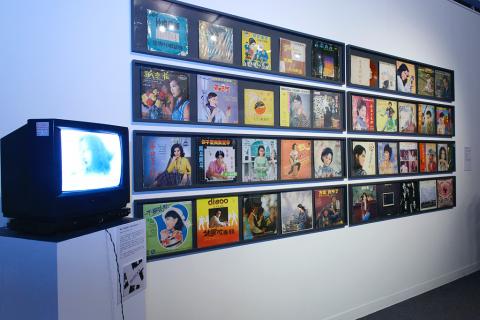
Photo courtesy of TheCube Project Space, Kaohsiung Museum of Fine Arts, MvoNTUE and Taishin Bank Foundation for Arts and Culture
The early 1990s also saw the short-lived noise movement led by LTK Commune (濁水溪公社) and Zero and Sound Liberation Organization (ZSLO, 零與聲音解放組織). In his article, sound artist Lin Chi-wei (林其蔚), a founding member of ZSLO, gives a detailed account of how, in the aftermath of the end of martial law and the Wild Lilies student movement (野百合運動), young artists, musicians and anarchists used music as a creative outlet to raise awareness about social issues.
The book includes many rare documents. A manifesto by LTK proclaims that “punks, drug dealers, queers and scumbags” should create a new social order. A flyer of the legendary Taipei Broken Life Festival (破爛生活節), which featured high-frequency noise performances and violent, provocative acts (performing colon cleansing using yoghurt and setting fire to the stage) that “forced most of the audience to flee from the scene.”
A NEW MILLENNIUM
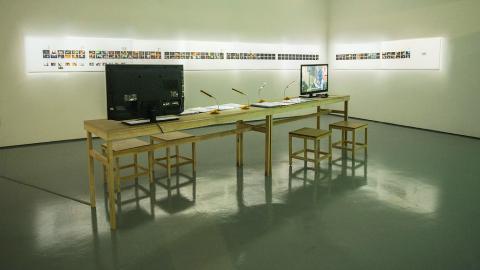
Photo courtesy of TheCube Project Space, Kaohsiung Museum of Fine Arts, MvoNTUE and Taishin Bank Foundation for Arts and Culture
ALTERing NATIVism ends in the new millennium with sound art by groups such as Lacking Sound Festival (失聲祭) and Etat (在地實驗).
Lo and Cheng say these artists are unique in the way they collaborate and form their own platforms, not only as artists and performers, but event planners, Web managers and publishers.
“In the 1990s, young people did what they did out of a sense of urgency. They [gave] the middle finger to the establishment. They didn’t organize. They were anti-institutional,” Cheng says, adding, “today’s young artists tend to organize, create their own alternative platforms and connect to the rest of the world.”
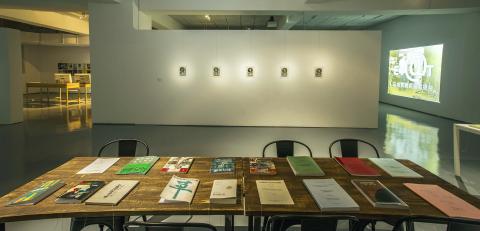
Photo courtesy of TheCube Project Space, Kaohsiung Museum of Fine Arts, MvoNTUE and Taishin Bank Foundation for Arts and Culture
ABORIGINAL POP
The book also discusses Aboriginal music — in particular, the largely unknown Aboriginal pop music.
According to academic Huang Kuo-chao (黃國超), Aboriginal pop developed and flourished outside the Han-Chinese music industry. It had a different mode of production and circulation, with pop stars and singers whose names were mostly unheard of to non-Aborigines.
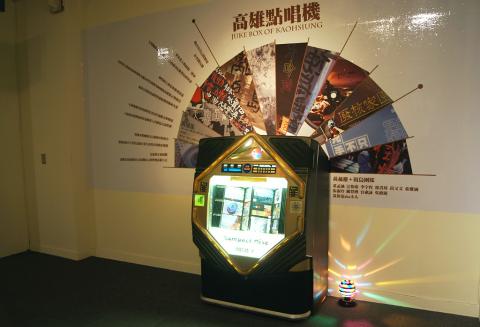
Photo courtesy of TheCube Project Space, Kaohsiung Museum of Fine Arts, MvoNTUE and Taishin Bank Foundation for Arts and Culture
“It is the alternative of the alternative,” Lo says. “This topic alone is worth writing a book about.”
A scaled-down exhibition of ALTERing NATIVism Sound Cultures in Post-war Taiwan is currently on display at MoNTUE, as part of the 13th Taishin Art Award Exhibition (第十 三屆台新藝術獎大展), which runs through July 26. The Taishin exhibition showcases five winning works, including Yuan Goang-ming’s (袁廣鳴) video art series An Uncanny Tomorrow (不舒適的明日) and Tsai Ming-liang’s (蔡明亮) theatrical work The Monk from Tang Dynasty (玄奘).
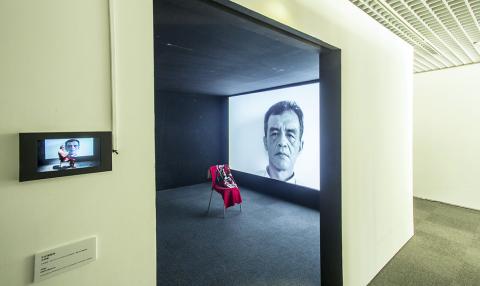
Photo courtesy of TheCube Project Space, Kaohsiung Museum of Fine Arts, MvoNTUE and Taishin Bank Foundation for Arts and Culture

Photo courtesy of TheCube Project Space, Kaohsiung Museum of Fine Arts, MvoNTUE and Taishin Bank Foundation for Arts and Culture
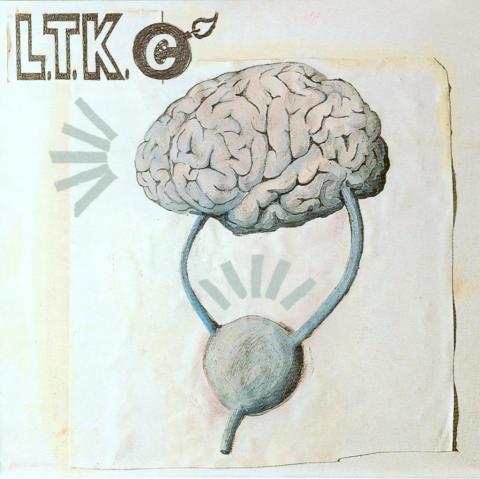
Photo courtesy of TheCube Project Space, Kaohsiung Museum of Fine Arts, MvoNTUE and Taishin Bank Foundation for Arts and Culture

This month the government ordered a one-year block of Xiaohongshu (小紅書) or Rednote, a Chinese social media platform with more than 3 million users in Taiwan. The government pointed to widespread fraud activity on the platform, along with cybersecurity failures. Officials said that they had reached out to the company and asked it to change. However, they received no response. The pro-China parties, the Chinese Nationalist Party (KMT) and Taiwan People’s Party (TPP), immediately swung into action, denouncing the ban as an attack on free speech. This “free speech” claim was then echoed by the People’s Republic of China (PRC),

Exceptions to the rule are sometimes revealing. For a brief few years, there was an emerging ideological split between the Democratic Progressive Party (DPP) and Chinese Nationalist Party (KMT) that appeared to be pushing the DPP in a direction that would be considered more liberal, and the KMT more conservative. In the previous column, “The KMT-DPP’s bureaucrat-led developmental state” (Dec. 11, page 12), we examined how Taiwan’s democratic system developed, and how both the two main parties largely accepted a similar consensus on how Taiwan should be run domestically and did not split along the left-right lines more familiar in

Most heroes are remembered for the battles they fought. Taiwan’s Black Bat Squadron is remembered for flying into Chinese airspace 838 times between 1953 and 1967, and for the 148 men whose sacrifice bought the intelligence that kept Taiwan secure. Two-thirds of the squadron died carrying out missions most people wouldn’t learn about for another 40 years. The squadron lost 15 aircraft and 148 crew members over those 14 years, making it the deadliest unit in Taiwan’s military history by casualty rate. They flew at night, often at low altitudes, straight into some of the most heavily defended airspace in Asia.

Many people in Taiwan first learned about universal basic income (UBI) — the idea that the government should provide regular, no-strings-attached payments to each citizen — in 2019. While seeking the Democratic nomination for the 2020 US presidential election, Andrew Yang, a politician of Taiwanese descent, said that, if elected, he’d institute a UBI of US$1,000 per month to “get the economic boot off of people’s throats, allowing them to lift their heads up, breathe, and get excited for the future.” His campaign petered out, but the concept of UBI hasn’t gone away. Throughout the industrialized world, there are fears that